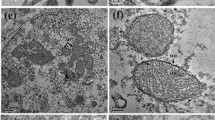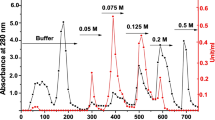Abstract
Investigation on the characteristic pattern of enzymes in various organisms may be of particular importance, as this type of information can help to understand certain physiological and biochemical processes in living organisms. Thiosulfate: cyanide sulfurtransferase (rhodanese) is a ubiquitous multifunctional enzyme, which its major function is generally believed to be in cyanide detoxification. The present study was conducted to determine the activity of this enzyme in some parasitic helminths including, cestodes (Moniezia benedeni, Helicometra giardi), trematodes (Fasciola hepatica, Fasciola gigantica, Dicrocoelium dendriticum) and nematodes (Haemonchus longistipes, Marshalagia marshalli). The data resultant from this study indicates that at least some rhodanese activity was present in all the seven investigated parasites, although its activity was much lower in comparison with previously reported values for some tissues of their vertebrate hosts. With respect to some degrees of cyanide insensitivity in parasitic helminths, it may be suggested that cyanide detoxification may not be a primary benefit of rhodanese in parasitic helminths and the true physiological and biochemical functions of the enzyme remains to be further defined in such organisms.
Similar content being viewed by others
References
Agboola FK, Okonji RE (2004) Presence of rhodanese in the cytosolic fraction of the fruit bat (Eidolon helvum) liver. J Biochem Mol Biol 37(3):275–281
Al-qarawi A, Mousa HM, Ali BH (2001) Tissue and intracellular distribution of rhodanese and mercaptopyruvate sulphotransferases in ruminants and birds. Vet Res 32:63–70
Aminlari M, Gilanpour H (1991) Comparative studies on the distribution of rhodanese in different tissues of domestic animals. Comp Biochem Physiol B 99:673–677
Aminlari M, Gholami S, Vaseghi T, Azadi A, Karimi H (2000) Distribution of rhodanese in different parts of the urogenital systems of sheep at pre- and post-natal stages. Comp Biochem Physiol B 27:369–374
Beesley SG, Compton SG, Jones DA (1985) Rhodanese in insects. J Chem Ecol 11:45–50
Bertran EC (1952) Rhodanese in parasites. Ann Fac Vet Univ Madr Inst Invest Vet 4:334–343
Bordo D, Bork P (2002) The rhodanese/Cdc25 phosphatase superfamily. Sequence–structure–function relation. EMBO Rep 3:741–746
Conn EE (1979) Cyanide and cyanogenic glycosides. In: Rosenthal A, Janzen DH (eds) Herbivores: their interaction with secondary plant metabolites. Academic Press, New York, pp 387–412
Jones DA (1972) Cyanogenic glycosides and their function. In: Harborne JB (ed) Phytochemical ecology. Academic Press, New York, pp 103–124
Kita K, Hirawake H, Takamiya S (1997) Cytochromes in the respiratory chain of helminth mitochondria. Int J Parasitol 27(6):617–630
Long KY, Brattsten LB (1982) Is rhodanese important in the detoxification of dietary cyanide in southern armyworm (Spodoptera eridania Cramer) larvae? Insect Biochem 12:367–375
Marr JJ, Nilsen TW, Komuniecki RW (2003) Molecular medical parasitology, 1st edn. Academic Press, London, pp 339–358
Nagahara N, Ito T, Minam M (1999) Mercaptopyruvate sulphurtransferase as a defence against cyanide toxication: molecular properties and mode of detoxification. Histol Histopathol 14:1277–1286
Nandi DL, Horowitz PM, Westley J (2000) Rhodanese as thioredoxin oxidase. Int J Biochem Cell Biol 32:465–473
Nazifi S, Aminlari M, Alaibakhsh MA (2003) Distribution of rhodanese in tissues of goat (Capra hircus). Comp Biochem Physiol B 234:515–518
Parsons J, Rothschild M (1964) Rhodanese in the larva and pupa of the common blue butterfly (Polyommatus icarus Rott.) (Lepidoptera). Entomol Gaz 15:58–59
Raybuck SA (1992) Microbes and microbial enzymes for cyanide degradation. Biodegradation 3:3–18
Saidu Y (2004) Physicochemical features of rhodanese: a review. Afr J Biotechnol 3(4):370–374
Seigler DS (1991) Cyanide and cyanogenic glycosides. In: Rosenthal GA, Berenbaum MR (eds) Herbivores: their interaction with secondary plant metabolites. Academic Press, San Diego, pp 35–78
Smith J, Urbanska KM (1986) Rhodanese activity in Lotus corniculatus sensu lato. J Nat Histol 20(6):1467–1476
Smyth JD, McManus DP (1989) The physiology and biochemistry of cestodes, 1st edn. Cambridge University Press, Cambridge, pp 107–109
Sorbo BH (1953) Crystalline rhodanese. I. Purification and physicochemical examination. Acta Chem Scand 7:1129–1136
Sylvester M, Sander C (1990) Immunohistochemical localization of rhodanese. Histochem J 22:197–200
Wood JL (1975) Biochemistry of thiocyanic acid. In: Newmann AA (ed) Chemistry and biochemistry of thiocyanic acid and its derivatives. Academic Press, New York, pp 156–221
Acknowledgments
This work was supported by grant from Ferdowsi University of Mashhad, Mashhad, Iran.
Author information
Authors and Affiliations
Corresponding author
Rights and permissions
About this article
Cite this article
Baghshani, H., Seyed Abadi, M. Thiosulphate: cyanide sulphur transferase activity in some species of helminth parasites. J Parasit Dis 38, 181–184 (2014). https://doi.org/10.1007/s12639-012-0214-0
Received:
Accepted:
Published:
Issue Date:
DOI: https://doi.org/10.1007/s12639-012-0214-0




